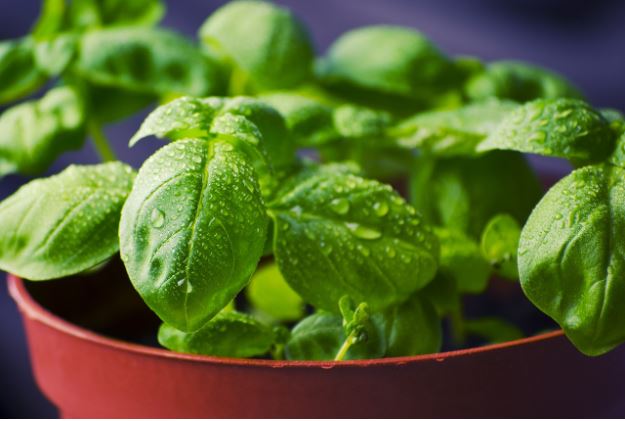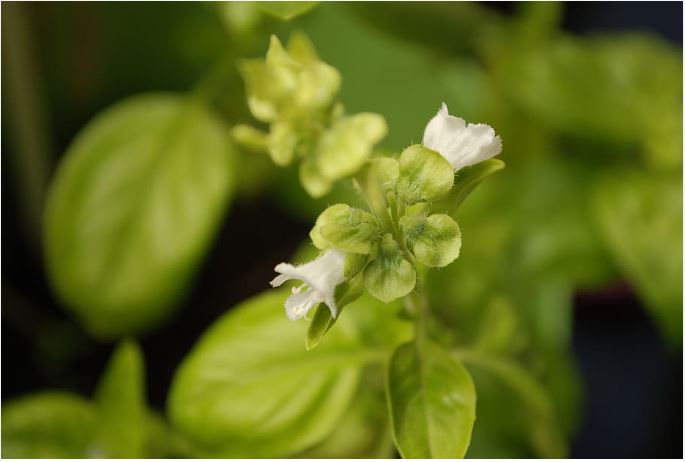
How to Grow Basil in a Pot
Basil is a flavorful and adaptable herb that can be grown in a pot with relative ease. It can be used in a variety of dishes, from salads and sandwiches to pasta and pizza. Basil is also a good source of vitamins A and C.
Here are the steps on how to grow basil in a pot:
This site contains affiliate links to products. We may receive a commission for purchases made through these links. The price you pay is exactly the same if you do or do not use my links. There are no extras costs to you.
- Choose a pot that is large enough to accommodate the basil plant’s roots and has drainage holes to prevent root rot.
- The pot should also be made of a material that will allow the soil to breathe, such as terracotta or plastic.
- Prepare the soil by mixing together equal parts of potting soil, compost, and perlite. This will create a well-draining soil that is rich in organic matter.
- Basil seeds should be planted about ¼ inch deep in the soil. To do this, simply press the seeds into the soil with your finger or a small trowel.
- Space the seeds about 2 inches apart.
- Water the basil seeds well and keep the soil moist but not soggy.
- Basil seeds will germinate in about 7-10 days.
- Place the pot in a sunny spot that receives at least 6 hours of sunlight per day. If you live in a hot climate, you may need to move the pot to a shady spot in the afternoon.
- Fertilize the basil plants every 2-3 weeks with a balanced fertilizer. This will help the plants grow strong and healthy.
- Harvest the basil leaves when the plants are about 6 inches tall. To do this, gently grasp the leaf between your thumb and forefinger and twist it slightly. The leaf should come away easily.
- Prevent pests and diseases by inspecting the plants regularly. If you see any problems or diseases, take action immediately to prevent them from spreading.

Tips for growing basil in a pot
Here are some additional tips for growing basil in a pot:
- Water deeply and infrequently. Basil doesn’t like to sit in wet soil, so water deeply when the top inch of the soil is dry.
- Basil plants will produce more leaves if the flowers are pinched off. To do this, simply pinch the flower buds off the stem with your fingers.
- Bring the pot indoors in the winter if you live in a cold climate. Basil can’t tolerate frost, so it will need to be protected from the cold.
With these tips, you’ll be sure to have a successful harvest of basil all season long.
Benefits of growing basil
Here are some benefits of growing basil:
- Basil is a delicious and versatile herb that can be used in a variety of dishes.
- Basil is a good source of vitamins A and C.
- Basil is easy to grow in a pot.
- Basil is a relatively low-maintenance plant.
- Basil can be harvested all season long.
What are some companion herbs that basil enjoys?
Oregano: Oregano is a Mediterranean herb that is closely related to basil. It has a strong, peppery flavor that complements basil well
Chives: A member of the onion family, chives have a mild onion flavor and help to repel pests.
Parsley: Parsley is a versatile herb that can be used in both cooked and raw dishes. It has a slightly bitter flavor that pairs well with basil.
Sage: Sage is a flavorful herb that has a slightly minty flavor. It is a good companion plant for basil because it helps to repel insects.
Thyme: Thyme is a member of the mint family and has a strong, earthy flavor. It is a good companion plant for basil because it helps to repel pests
Mint: Mint is a refreshing herb that has a strong, minty flavor. It is a good companion plant for basil because it helps to repel insects
These are just a few of the many herbs that can be grown along with basil. When choosing companion plants, it is important to consider the plants’ needs and preferences. For example, basil prefers full sun, so you will want to choose companion plants that also prefer full sun.
It is also important to consider the plants’ growth habits. For example, basil can be quite bushy, so you will want to choose companion plants that will not be crowded out by the basil.
By carefully choosing companion plants, you can create a thriving herb garden that is both productive and attractive.
Conclusion
If you’re looking for a delicious and easy-to-grow herb to add to your garden, basil is a great choice. With a little care, you can have fresh basil on hand all season long.


